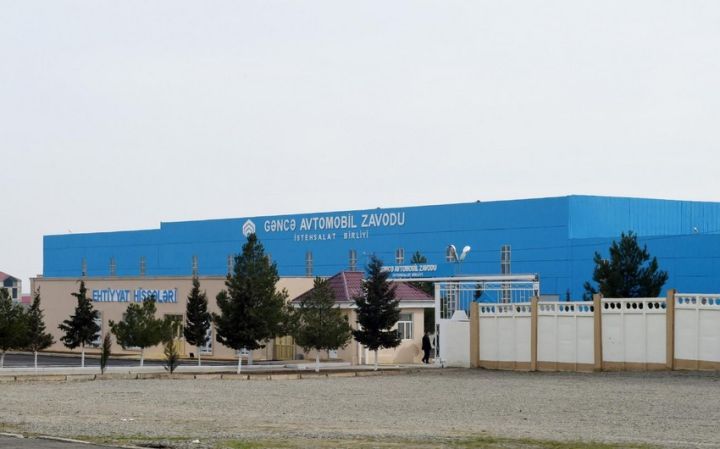Ganja Auto Plant emerges as industrial model with strategic shift toward manufacturing

In the age of fast-paced technological shifts and energy transitions, smaller economies are often dismissed as peripheral players. Yet, Azerbaijan is crafting a compelling counter-narrative — one that blends industrial policy with quiet diplomacy, and long-term planning with regional cooperation.
The latest signal came with the announcement that vehicles and machinery produced by a major automobile plant in Ganja will now be exported to Turkiye and other international markets. At first glance, this may seem like a routine business development. But beneath it lies a deeper story — one that reflects nearly two decades of deliberate state-backed industrial rebuilding and external engagement.
What sets this apart is not the size of the contracts or the scale of production — the annual output remains modest, with around 700 to 800 tractors produced each year. Rather, it is the sustained commitment to cultivating industrial capabilities and fostering cross-border manufacturing partnerships that deserves attention.
The foundation for this trajectory was laid in the mid-2000s, when Azerbaijan began deepening its economic and technological ties with Eastern Europe. Over the years, collaborations with major Belarusian manufacturers in the automotive and agricultural machinery sectors led to joint production ventures and knowledge transfer. A once-dormant plant in western Azerbaijan has been transformed into a functioning production hub, steadily assembling tractors, municipal vehicles, and waste collection equipment.
This transformation has not occurred in isolation. A recent memorandum signed between the governments of Azerbaijan and Belarus reaffirms their commitment to developing joint production in heavy machinery. Additionally, a separate contract involving a European industrial partner — a well-known German firm specializing in waste management systems — brings added credibility and technical depth to the venture.
The significance of these partnerships goes beyond mere economics. They serve as a template for how middle-income, resource-rich countries can reimagine their industrial future. For Azerbaijan, the goal is clear: to diversify away from hydrocarbons without abandoning national strengths. Rather than chasing high-tech industries for which there may be limited domestic expertise, the country is focusing on tangible, utilitarian sectors — agriculture, logistics, municipal services — where it can build scale, train labor, and serve both domestic and export markets.
Exporting to Turkiye adds an additional layer of strategic value. As a regional economic power and a close trade partner, Turkiye represents both a validation of quality and a springboard to broader markets. The inclusion of Turkiye in the export strategy signals Azerbaijan's ambition to position itself within a larger regional value chain — one that spans Central Asia, the Caucasus, and Europe.
This is not to say the road ahead is easy. Competing with established machinery exporters requires not only consistent quality but also marketing acumen, after-sales support, and supply chain resilience. Still, the fact that Azerbaijan is entering these competitive markets through partnerships rather than isolationist policies gives it a stronger footing.
What’s especially instructive here is the patient, incremental nature of Azerbaijan’s approach. Unlike countries that chase overnight industrial revolutions through flashy megaprojects, Azerbaijan’s strategy relies on reviving legacy infrastructure, adapting proven technologies, and embedding itself in transnational production networks. It’s a slower path — but also a more sustainable one.
In an era where many post-Soviet states still struggle to define their post-oil or post-transition identities, Azerbaijan’s industrial policy offers a noteworthy case study. It shows that industrial revival is not just possible but practical — if it’s rooted in long-term partnerships, regional coherence, and a realistic understanding of domestic capacity.
This quiet industrial diplomacy may not make global headlines. But it’s building something even more valuable: national capability with international relevance.
Here we are to serve you with news right now. It does not cost much, but worth your attention.
Choose to support open, independent, quality journalism and subscribe on a monthly basis.
By subscribing to our online newspaper, you can have full digital access to all news, analysis, and much more.
You can also follow AzerNEWS on Twitter @AzerNewsAz or Facebook @AzerNewsNewspaper
Thank you!

